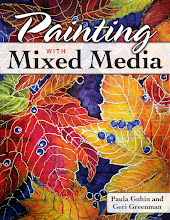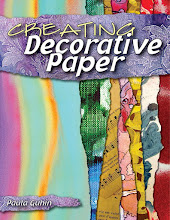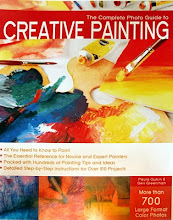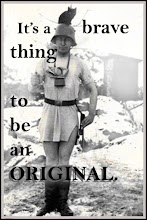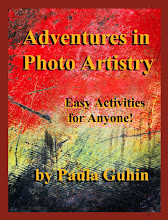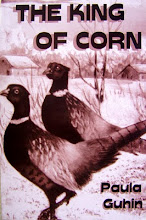It's Always On My Mind
Saturday, October 15, 2011
MAKING A STATEMENT WITH ASSEMBLAGE
It's my belief that most wars are cooked up by men...oh, if only women ruled the entire world! I used toy soldiers, a toy tank and airplane, and more, attached to half a pair of The Thinker bookends with strong adhesive. I also used acrylic paint (including blood red, which you can't see very well in this photograph).
Labels:
altered art,
assemblage,
sculpture
Friday, October 7, 2011
ART ACTIVITY WITH KIDS or for anyone, really!
Squirt, Squish, and Squeegee!
This elementary art project is so fun and so cool, adults will want to try it, too.
It leaves a lot to chance, but the results can be serendipitous and gorgeous. Best of all, there's no mess and no clean-up!
Materials:
- White illustration board or foam core, 8x10"
- Tubes of cheap acrylic paints
- Small squares or rectangles of matboard or cardboard
- Clear adhesive shelf liner
Technique:
- If you're working with a roomful of youngsters, have them sign their name on the back of the cardboard or foamcore first!
- Have them help each other (or use an assistant) to squeeze out three or four colors of paint on the cardboard, somewhere near the center but not touching each other. Let the kids choose their own color combos. Tell the kids to use no more of one color than they would put on their toothbrush if the paint were toothpaste. (This sounds silly, but remind youngsters that the paint is not edible.)
- Again, help younger kids or let them help each other with a piece of see-through adhesive shelf liner that has been cut large enough to cover the 8x10" board. Start peeling the sticky paper at one end and attach that to the board, then cover the entire board, right over the paint blobs. Try to press as you go, to avoid big air bubbles. (Note: clear acetate can be substituted for the stick-on plastic, since the paint will eventually dry at the edges and adhere the acetate to the board.)
- Now for the really fun part! Grab a small square of cardboard or matboard and spread the paint beneath its plastic covering. Press hard. It mixes the colors where they meet, and makes for exciting whorls, waves, and octopus shapes. Other tools that move the paint around under its covering include credit cards, hair combs, putty knives, and tile adhesive applicators.
Labels:
acrylics,
art activity,
art lesson,
art teacher,
beginner,
easy,
fast,
how to,
method,
project,
quick,
student,
teach,
tutorial
Subscribe to:
Posts (Atom)









